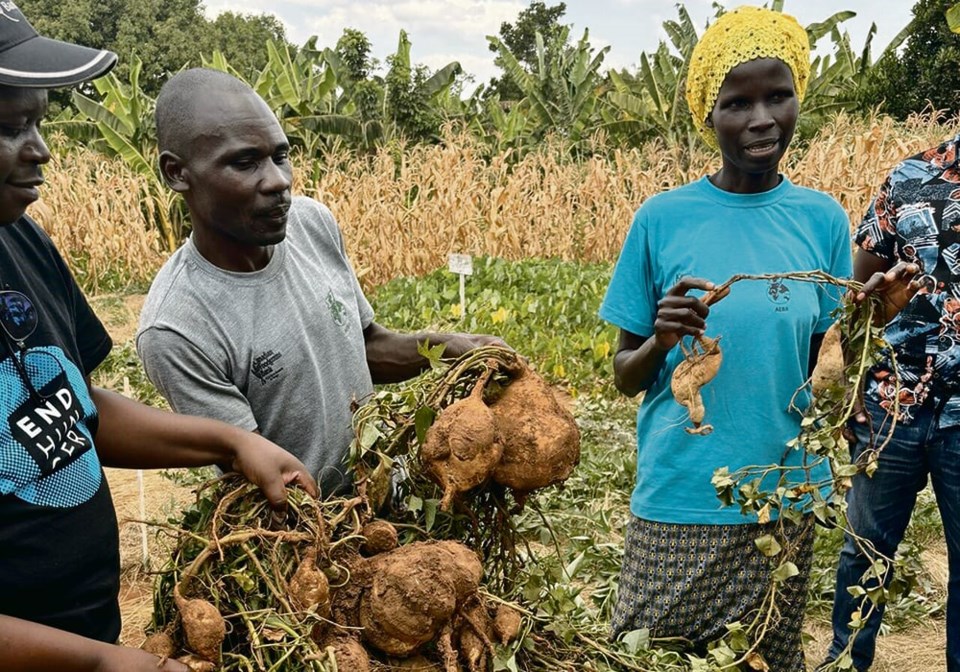WESTERN PRODUCER — An image of two plants is imprinted in Luke Lorentz’s mind after his recent trip to Rwanda.
They’re either sweet potatoes or cassava. One was grown with conservation agriculture techniques and one was grown without.
The latter plant produced a few stringy vines and two small tubers. The other one, grown using conservation agriculture techniques, was so heavy that it required four men to lift it, said Lorentz, who is finance manager at the Canadian Foodgrains Bank and travelled to Rwanda with several other staff members earlier this summer.
Conservation agriculture comprises a set of farming practices that emphasize minimal soil disturbance, soil cover, intercropping, crop rotation and variety.
The foodgrains bank’s partner organizations, many of which have long-established connections in Rwanda, the Democratic Republic of the Congo, Kenya and Ethiopia, have been teaching the techniques to small-scale farmers.
Many of these farmers struggle to produce enough food for their families on small plots as they deal with harsh and erratic weather, depleted soil, lack of market access, government instability and lack of resources, says the foodgrains bank website.
“It’s absolutely insane how much (conservation agriculture) improves the yields of … a lot of the crops,” Lorentz said, adding that yields tripled on average.
Local partners also work with communities to start small savings and loan associations, through which members can save money and borrow from the group’s savings to buy crop inputs or livestock or pay for schooling.Lorentz said he met one family who borrowed money from their association to send three kids to university, which otherwise would have been impossible.
“It all kind of snowballs into having a resilient community,” he said.
One community, in partnership with the local church, built a warehouse so crops could be safely stored for the right marketing opportunity.
The trip was part of the onboarding process for a group of new Canadian Foodgrains Bank staff, including Lorentz, who said it was clear that people’s lives are changed through the work of the foodgrains bank and its partner organizations.
“(It) really kind of made me feel good about my job,” he said. “I felt connected. The money donated is actually changing lives all across the world and seeing it firsthand, it was just really inspiring. And I’m not just saying that. I actually, truly felt it.”
Related
About the Author




